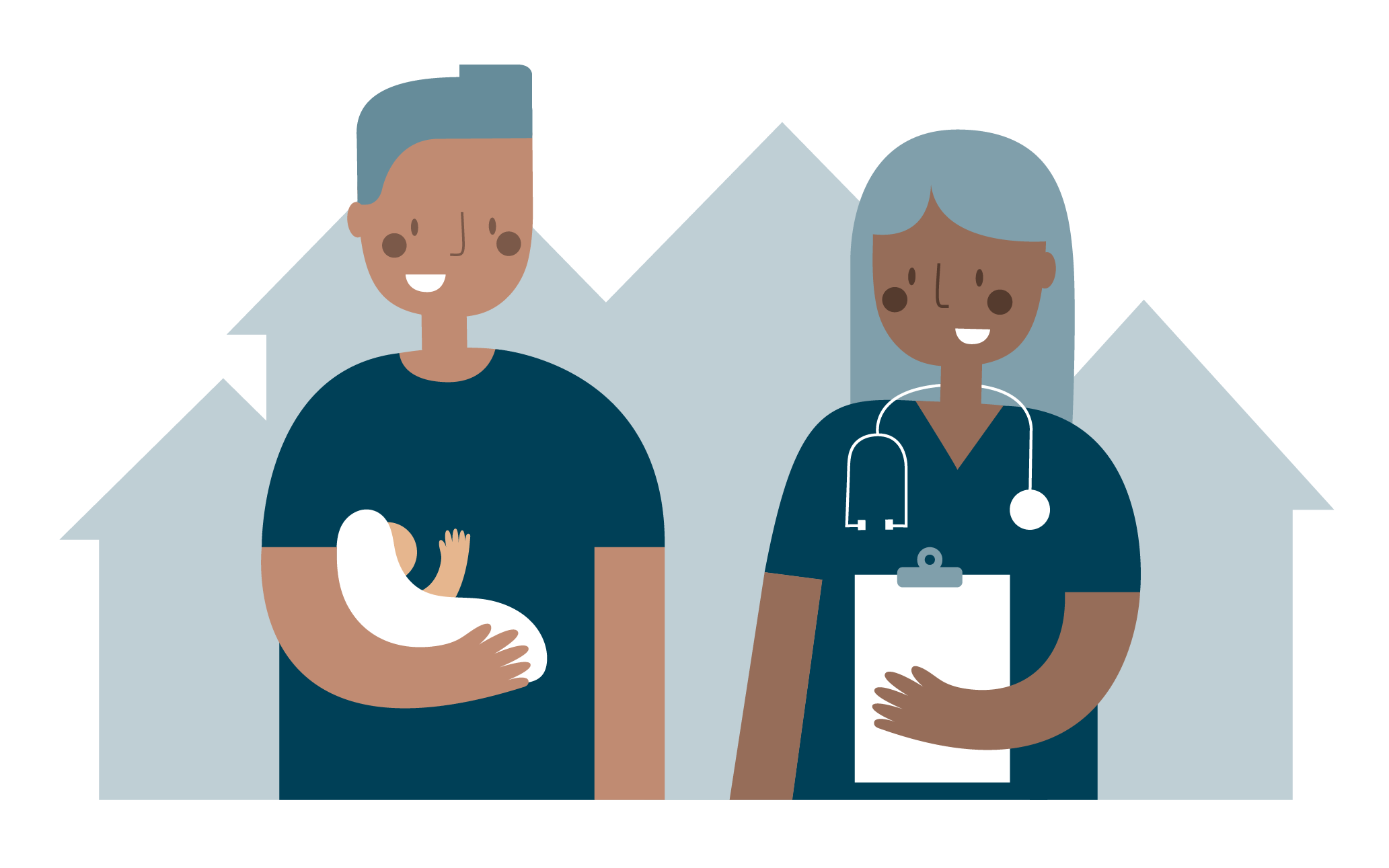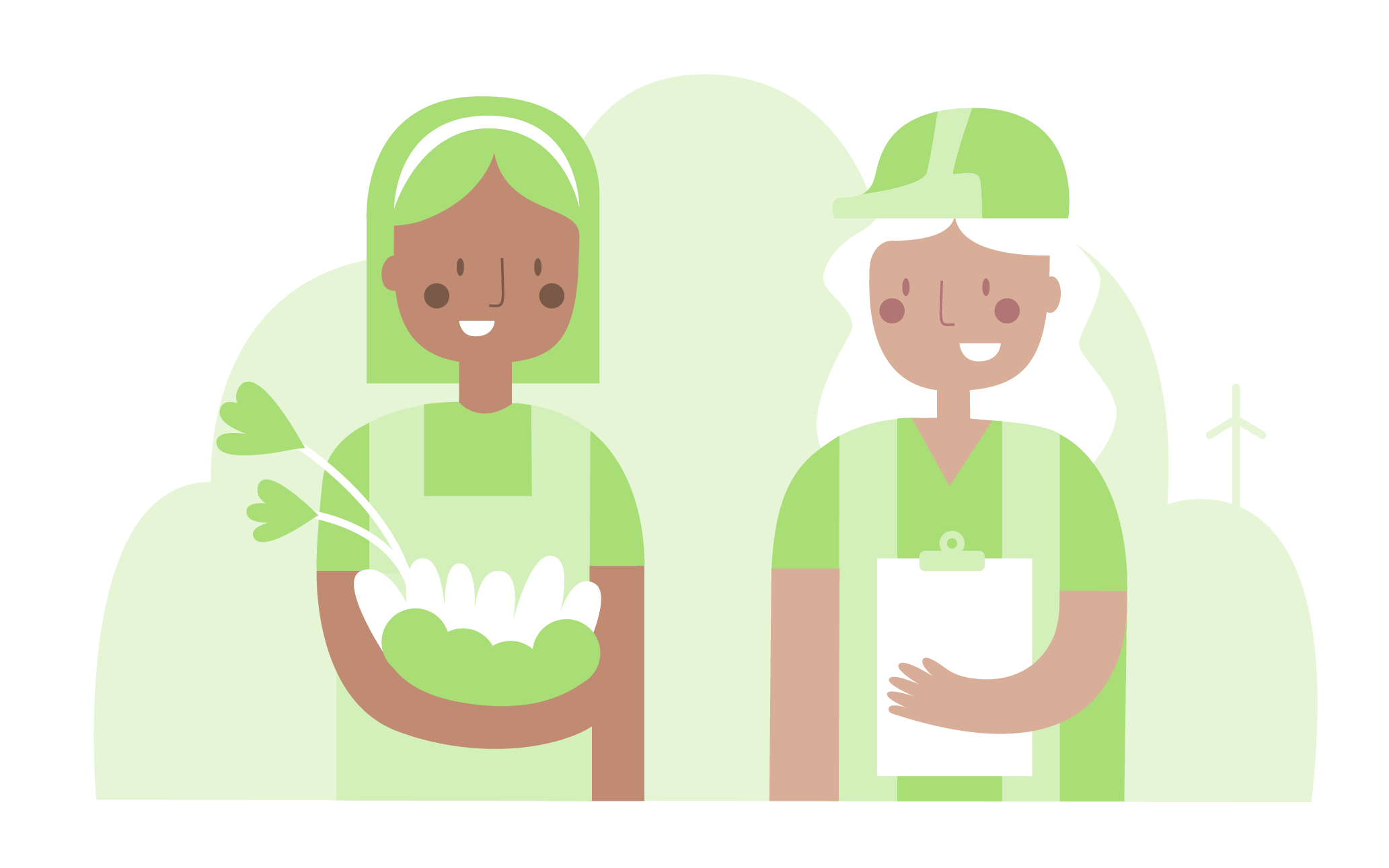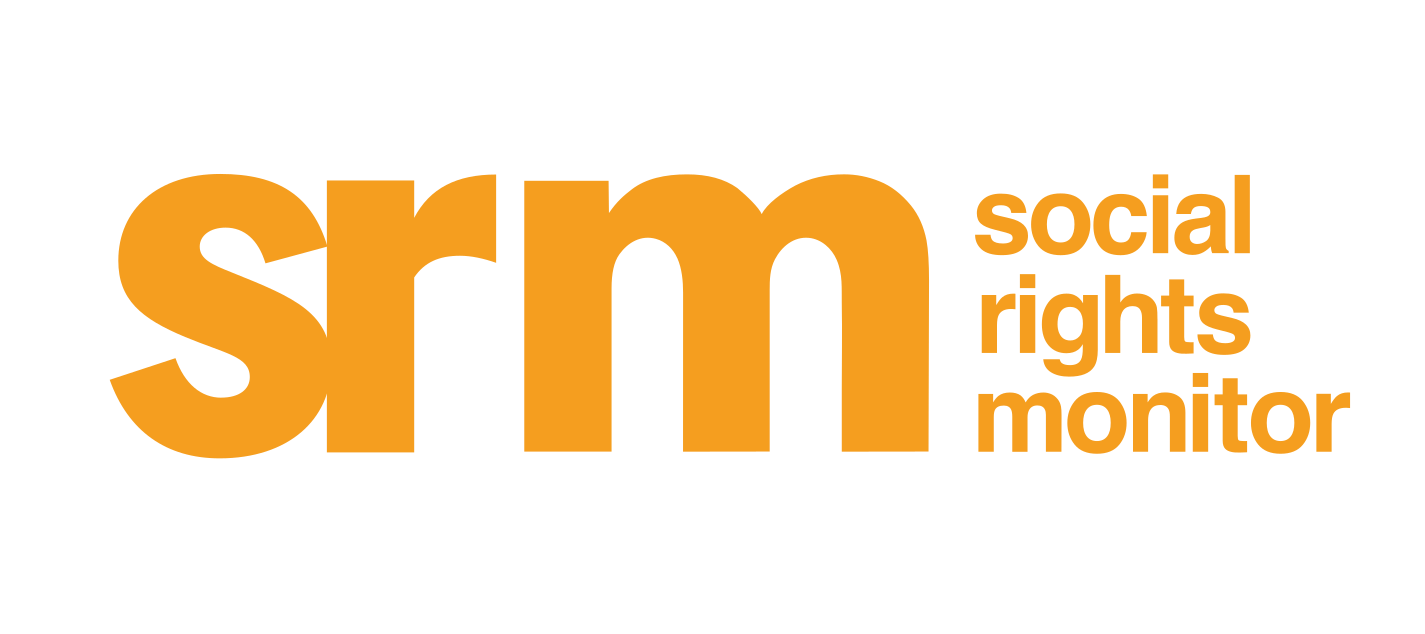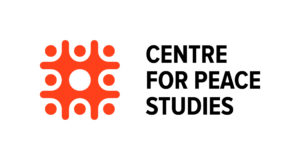Croatia
Score: 47
Social Rights Monitor Overview
Croatia became the 20th member of the Eurozone and 27th member of the Schengen area in January 2023. The decade since the country’s accession to the European Union has been marked by change, including a significant increase in immigration and a sustained but incomplete convergence of labour market outcomes with EU averages.[1] Like the rest of Europe, Croatia was affected in 2022 and 2023 by the consequences of Russia’s full-scale invasion of Ukraine, both in terms of inflation that ate away at real wages and around 20,000 Ukrainian refugees who were granted protection on Croatian soil.
The Croatian National Strategy Group, led by the Centre for Peace Studies (CMS), noted some positive developments, such as investment in education, improvements in employment rights and an expansion of the welfare system. But state measures to address issues such as gender equality, the integration of migrants, energy poverty and the housing crisis are inadequate. Of even more concern, the current Croatian government maintains an unsympathetic and even hostile attitude towards civil society organisations (CSOs) and has excluded CSOs from meaningful participation in policymaking. CSOs, especially those dealing with environmental issues and human rights, have also faced intimidation from the authorities.
[1] European Commission (2023), Country Report 2023 – Croatia

Score: 47
Equal Opportunities and Access to the Labour Market
Gender equality
In March 2023, after seven years without any national policy for gender equality, the government of Croatia finally adopted the National Plan for Gender Equality 2022-2027,[1] even though the deadline for adoption had been set for 2020. The absence of a strategic plan, along with its delayed adoption, was in direct violation of the Gender Equality Act.[2] Furthermore, the NSG was highly critical of both the procedures according to which the plan was adopted and its contents. Whereas previous National Plans for Gender Equality had been adopted by the Croatian parliament after being proposed by the government, the current Plan was sanctioned only by the government, with no input from the legislature or civil society. This closed-door approach meant that, according to the NSG, the Plan was poorly drafted, with priority areas set without taking into account the needs of the target group. Furthermore, the NSG raised concerns over the projected implementation of the Plan, as it identified a lack of clarity in the measures proposed and inadequate or unclear sources of funds for the policies.
Gender disparities are still prevalent in Croatia. Although there was a significant reduction in the gender pay gap in 2021 and 2022, which fell to around 7%, analysis of business sectors suggests this reduction was due to the economic slowdown associated with the Covid pandemic. This is confirmed by Croatia’s low female activity rate (65% compared to an EU average of 69.5% in 2022[3]) and its gender employment gap, one of the highest in the EU. Moreover, Croatian women are more likely than men to be employed on temporary contracts and be subject to precarious employment, which is also linked to a growth in the use of fixed-term contracts.[4] The Gender Equality Ombudsperson has repeatedly raised concerns over the problem of employers not renewing the contracts of pregnant workers and new mothers. These disparities also extend to the home: Data from the European Institute for Gender Equality show that, while 62% of women in Croatia participate in everyday household tasks such as cooking and cleaning, only 12% of men do so. Similarly, whereas 35% of women in Croatia spend time taking care of children and elderly and disabled family members, the number for men is just 21%. Data from the latest report by the Ombudsperson for Gender Equality shows that, out of 500 to 600 annual complaints filed with their office, around 20% are related to employment. Of these complaints, 25% to 30% are due to sexual harassment, and the share has been increasing in recent years. The other topics of employment-related complaints stem from age-based gender discrimination and discrimination linked to maternity.[5]
The reporting period also saw the entry into force of the Work-Life Balance Directive, which was transposed by Croatia through amendments to the Labour Act[6] and Maternity and Parental Benefits Act.[7] Beginning with the Labour Act, the NSG was highly critical of the amendments, stating that, despite work-life balance being a highly gendered issue, the changes to legislation did not employ a gender-sensitive approach or even gender analysis. The new Labour Act accords an insufficient level of protection of women’s labour rights and does little to affect discrimination against women at work. Furthermore, comments submitted by CSOs to the public consultation were ignored, such as the suggestion to offer the options of telework or flexible working hours to pregnant women, parents with young children and caregivers.[8] Similarly, the Maternity and Parental Benefits Act was also criticised by the NSG for not being ambitious enough and not even compliant with the Directive. This represents another missed opportunity to improve the level of social rights protection and gender equality. Although paternity leave was finally introduced into Croatian legislation, it was set at the minimum level required by the Directive – 10 days. Again, CSOs comments to the public consultation were not considered.[9]
Public authorities’ generalised lack of gender sensitivity is also seen in the continuation of the Zaželi (Wish) programme, which aims to train unemployed women as old-age caregivers, paying them minimum wage.[10] Although this programme has laudable aims of increasing the availability of care services and reducing female unemployment, it also encourages the perpetuation of gender stereotypes and inequalities at work.[11] Similarly, 25 shelters for domestic violence victims exist in Croatia, of which six were founded recently, although the Gender Equality Ombudsperson noted that there was still a need to increase the capacity of housing care for victims of domestic violence.[12]
Education, training and lifelong learning
Croatia is still some way away from achieving the revised Barcelona Targets on early childhood education and care (ECEC), adopted by the EU in 2022. Whereas the objectives foresee participation by at least 45% of children under the age of three in early childhood education and care and by at least 96% participate in early childhood education, the current figures for Croatia stand at 26% and 78% respectively.[13] Therefore, amendments to the Pre-School Education Act were adopted in 2022 that aimed to widen the accessibility of ECEC programmes. The amendments foresee the creation of a network of kindergartens at a national level in order to reduce regional differences. They also obligate local governments to meet the needs of children and parents for ECEC, either by establishing kindergartens, creating early childhood education programmes in primary schools or procuring places on programmes in neighbouring municipalities. In addition, state funds for the completion and functioning of kindergartens will be made available for local and regional governments in areas with the lowest levels of economic development, complementing European Union investments.[14]
Three other reforms also took place in Croatian education during the reporting period. Firstly, the government introduced an experimental programme aimed at transitioning the education system towards full-day school.[15] Croatia is currently the EU state with the lowest number of hours spent by pupils in learning.[16] Despite this positive goal, the programme was criticised by the NSG for not placing sufficient emphasis on fairness and inclusivity and for not providing special measures for disadvantaged groups, severely hampering the programme’s ability to reach its goal. The NSG points out that simply increasing the number of hours of schooling without targeted measures will not improve the educational attainment and wellbeing of disadvantaged pupils. Other actors have had similar criticisms of the programme.[17] These shortcomings have led to a lack of interest from schools to participate.[18]
Secondly, adult education vouchers were introduced in April 2022, representing the first example of a structured adult education system in Croatia. These vouchers, as foreseen by the Adult Education Act of 2021, are funded by the National Recovery and Resilience Plan and target green and digital skills.[19] People who want to improve their level of competence in various skills can choose from a catalogue of courses. If they are accepted onto a course, the voucher will pay all or part of the costs.[20] However, the NSG raised concerns over how these vouchers are targeted, as they are available to people who are generally able to access further training without state support, either by funding it themselves or through their employer. Also, application for the vouchers relies entirely on individuals‘ initiative. Furthermore, the NSG noted that, given that the vouchers only fund existing programmes offered at educational institutions, there has been no strategic planning of the adult education curriculum.
Finally, the NSG highlighted the developments in Croatia’s civic education, which became a mandatory subject in primary and secondary schools in 2019.[21] However, several local governments were dissatisfied with the Ministry of Education’s attitude towards civic education and elaborated alternative programmes, most notably the so-called “Rijeka Model” developed by the City of Rijeka and adopted by several other local governments.[22] Similarly, the City of Zagreb developed its own programme in 2022 – the “Community of Active Citizens”, which consists of 70 hours of extracurricular activity over the course of the school year.[23]
Inclusion of migrants, refugees, asylum seekers and vulnerable groups
The number of migrants, asylum seekers and refugees in Croatia continued to grow in 2022: 42,166 more residence and work permits were issued compared to 2021, with the total for the year standing at 124,121.[24] Similarly, there were 12,872 applications for international protection, 9,833 more than in 2021. However, only 21 decisions on granting asylum or subsidiary protection were issued, compared to 68 in 2021.[25], [26] In addition, 19,275 people displaced from Ukraine received temporary protection in Croatia in 2022 under the EU’s Temporary Protection Directive.[27] There was also a change in the legislation on migrant workers during reporting period: A labour-market test (in which a would-be employer of a third-country national must ensure there are no suitable Croatian candidates for the position) replaced the old migrant quota system. This change was negotiated by the government with trade unions in order to avoid exploitation of migrant labour. The test is waived for jobs in sectors in which there are labour shortages, such as agriculture, forestry, hospitality and tourism, and there are other exemptions too. The past few years have represented a turning point in immigration to Croatia, as the number of non-Croatian residents has risen rapidly, from around 10,000 in 2013 to a sizeable population of almost 58,000 in 2022.[28] While most foreign workers are still nationals of neighbouring states, especially Bosnia and Herzegovina, Serbia and North Macedonia, there is also a rising number of workers from Asian countries such as Nepal.[29]
Despite this growing phenomenon, there has been no strategic planning by the Croatian government for the integration of migrants, asylum seekers and refugees. The NSG highlighted the almost complete lack of high-quality Croatian language courses as the most significant problem. This is a crucial issue, as insufficient Croatian language skills are one of the key reasons why third-country nationals have lower labour market outcomes, as they are often only able to access lower-paid jobs.[30] The Act on the Recognition and Validation of Foreign Educational Qualifications, which came into force in June 2022, provides a new standardised procedure for the recognition of qualifications obtained outside the EU. However, the NSG raised concerns over the lack of an expedited procedure for people under international protection and the continued difficulties of entering a “regulated profession” (such as medicine or law) with foreign qualifications.[31] The NSG also reported that refugees and asylum seekers in Croatia face discrimination when attempting to access banking services. This is because banks treat them as third-country nationals and not as people under international protection. Therefore, refugees and asylum seekers from countries such as Iraq, Iran and Syria are treated as potential risks for money laundering or financing terrorism risks, and they are asked to provide documents (such as travel documents from their country of origin) that they simply do not have. The City of Zagreb adopted an Action Plan for the integration of asylum seekers and refugees in January 2022, which defines measures related to integration including the following: social and health protection; language learning and education, work and employment; and local integration capacities.[32] The plan has led to the provision of services to help asylum seekers and refugees gain employment and exercise their labour rights.[33]
Figures from the 2011-2021 census, published in 2022, show large decline in the number of Croat citizens who declared themselves Serbs – a drop of almost 33% in the past two years. This drop is starker in areas of the country with higher Serb populations: The number declined by 51.8% in Vrhovina and 45.4% in Dvor. Similarly, the Serbian population of Vukovar fell below 30% of its total population. These developments have serious implications for the use of Serbian and Cyrillic in official contexts, as the Croatian Constitution guarantees the official use of minority languages only in municipalities and cities where a national minority makes up more than 30% of the population. The Census also documented 17,980 people who declared themselves as Roma in 2021.[34] However, a baseline data study from 2018 suggests that the figure is closer to 25,000.[35] In 2022, the Office for Human Rights and Rights of National Minorities began drafting the 2023-2025 Action Plan for implementing the Roma Inclusion Plan 2021-2027.[36] However, the Centre for Peace Studies (CPS) expressed disappointment with the lack of ambition in the Action Plan’s drafting and criticised the proposed measures as not being adequate to achieve the Inclusion Plan’s goals.[37]
[1] Government of Croatia (2022), National Gender Equality Plan 2022-2027
[2] Government of Croatia (2022), Decision of the Government of Croatia on the Adoption of the National Gender Equality Plan 2022-2027 and the Action Plan for the Implementation of the National Gender Equality Plan 2022-2027, for the Period 2022-2024
[4] Eurostat (2023), Part-time employment as a percentage of the total employment, by sex and age
[5] Ombudsperson for Gender Equality (2022), Activity Report for 2022
[6] Act on Amendments of the Labour Act (2022), Narodne Novine 151/2022
[7] Act on Amendments of the Maternity and Parental Benefits Act (both 2022), (1) Narodne Novine 85/2022, (2) Narodne Novine 152/2022
[8] Government of Croatia (2022), Report of the Public Consultation on the Draft Proposal of the Act on Amendments to the Labour Act
[9] Government of Croatia (2022), Report of the Public Consultation on the Draft Proposal of the Act on Amendments to the Maternity and Parental Benefits Act: (1) https://esavjetovanja.gov.hr/ECon/EconReport?entityId=21016 and (2) https://esavjetovanja.gov.hr/ECon/EconReport?entityId=22511
[10] Ministry of Labour, the Pension System, Family and Social Policy (2023), Zaželi programme, phase III, Public Call for Proposals: http://www.esf.hr/natjecaji/socijalno-ukljucivanje/poziv-na-dostavu-projektnih-prijedloga-zazeli-program-zaposljavanja-zena-faza-iii/
[11] Ministry of Labour, the Pension System, Family and Social Policy (2021), Final Report of the ‘mid-term evaluation of the efficiency, effectiveness, and impact of the operational Programme effective human resources 2014-2020 (OPEHR)’: http://www.esf.hr/wordpress/wp-content/uploads/2021/07/Zavrsno-izvjesce_evaluacija_Horizontalna_OPULJP_final_lipanj_2021.pdf
[12] Gender Equality Ombudswoman (2023), Annual Report for 2022, URL: https://www.prs.hr/application/uploads/Izvje%C5%A1%C4%87e_o_radu_PRS_u_2022_cjelo.pdf
[13] Eurostat (2022), Early Childhood Education Statistics: https://ec.europa.eu/eurostat/statistics-explained/images/c/c8/Early_childhood_education_statistics_ET2022.xlsx
[14] Act on pre-school Education (2022), Nardone Novine 57/2022: https://narodne-novine.nn.hr/clanci/sluzbeni/2022_05_57_805.html
[15] Government of the Republic of Croatia (2022), Fuchs: Full-day Curriculum from next year in 50 Schools: https://vlada.gov.hr/vijesti/fuchs-eksperimentalni-program-cjelodnevne-nastave-od-iduce-godine-u-50-skola/37802
[16] srednja.hr (2023), Network of Experts on All-Day School: Insufficient Emphasis on one of the most Important Goals: https://www.srednja.hr/novosti/mreza-strucnjaka-o-cjelodnevnoj-skoli-nije-stavljen-dovoljan-naglasak-na-jedan-od-najvaznijih-ciljeva/
[17] srednja.hr (2023), Petition Launched over an All-Day School, Teachers Appalled by Certain Provisions: Fuchs Announces Comments: https://www.srednja.hr/zbornica/pokrenuta-peticija-oko-cjelodnevne-skole-ucitelji-zgrozeni-pojedinim-odredbama-fuchs-se-oglasio-oko-komentara/
[18] srednja.hr (2023), The Ministry has Changed the Plan of the All-Day School: The New Schedule has been Extended, and the Deadline for School Registration has been Extended: https://www.srednja.hr/zbornica/ministarstvo-promijenilo-plan-cjelodnevne-skole-novi-je-raspored-produljen-i-rok-za-prijavu-skola/
[19] Adult Education Act (2021), Nardone Novine 144/2021, URL: https://narodne-novine.nn.hr/clanci/sluzbeni/2021_12_144_2460.html
[20] Croatian Employment Service (2023), Education Offer: https://vauceri.hzz.hr/katalog-vjestina-hzz-vauceri/hzz-savjetnici/
[21] Ministry of Science and Education (2019), Decision on the Adoption of the Curriculum for the Subject of Civil Eudcation for Primary and Secondary Schools in the Republic of Croatia: https://narodne-novine.nn.hr/clanci/sluzbeni/2019_01_10_217.html
[22] City of Rijeka (2023), Civic Education: https://www.rijeka.hr/teme-za-gradane/odgoj-i-obrazovanje/osnovne-skole/programi-i-projekti-u-osnovnim-skolama/gradanski-odgoj-obrazovanje/
[23] City of Zagreb (2022), Proposal for a framework curriculum for extracurricular activities of the Communities of active citizens — ZAG for primary and secondary schools in the City of Zagreb: https://www.zagreb.hr/userdocsimages/arhiva/odgoj_obrazovanje_spot/ZAG.pdf
[24] Lider (2023), Record Number of Foreign Permits in 2022: Mostly from Surrounding Countries and Nepalese!: https://lidermedia.hr/biznis-i-politika/rekordan-broj-stranih-dozvola-u-2022-najvise-iz-zemalja-u-okruzenju-i-nepalaca-148385
[25] Ministry of the Interior (2023), Statistical indicators of persons granted international protection in the Republic of Croatia by 31.12.2022: https://mup.gov.hr/UserDocsImages/OTVORENI%20PODACI/Tra%C5%BEitelji%20me%C4%91unarodne%20za%C5%A1tite/web%20statistike%202022%20Q4%20TMZ.pdf
[26] Ministry of the Interior (2022), Statistical indicators of persons granted international protection in the Republic of Croatia by 31.12.2021: https://mup.gov.hr/UserDocsImages/statistika/2021/Medjunarodna_zastita/Statisticki-pokazatelji-trazitelja-medjunarodne-zastite-do-31-12-2021.pdf
[27] Eurostat (2023), Decisions granting temporary protection by citizenship, age and sex – annual data: https://ec.europa.eu/eurostat/databrowser/view/MIGR_ASYTPFA/default/table?%20lang=en&category=migr.migr_asy.migr_asytp
[28] Croatian Bureau of Statistics (2023), Migration of Population of Republic of Croatia, 2022: https://podaci.dzs.hr/2023/en/58062
[29] Croatian Employment Service (2023), Statistics the Residences and Work Permits of Foreign Workers 2022: https://www.hzz.hr/app/uploads/2023/03/Statistika-1.1.-31.12.2022..xlsx
[30] Centre for Peace Studies (2023), Research: Absence of Croatian Language Courses for Foreigners is the Biggest Obstacle to Successful Integration in Croatia: https://www.cms.hr/hr/azil-i-integracijske-politike/istrazivanje-izostanak-tecajeva-hrvatskog-jezika-za-strance-najveca-prepreka-uspjesnoj-integraciji-u-hrvatskoj
[31] Act on the Recognition and Validation of Foreign Educational Qualifications (2022), Nardone Novine 69/2022: https://narodne-novine.nn.hr/clanci/sluzbeni/2022_06_69_1023.html
[32] City of Zagreb (2022), Action Plan of the City of Zagreb for Asylum Seekers and Persons Granted International Protection for 2022: https://connection.integratingcities.eu/good_practices/strategies/Zagreb_Action_Plan_for_Integration.pdf
[33] City of Zagreb (2023), Report on the implementation of measures and activities from the City of Zagreb Action Plan for the Integration of applicants for international protection and persons granted international protection for 2022: https://web.zagreb.hr/sjednice/2021/sjednice_skupstine_2021.nsf/CPDNW?OpenFrameset
[34] Croatian Bureau of Statistics (2022), Final results of the 2021 Census Published: https://dzs.gov.hr/vijesti/objavljeni-konacni-rezultati-popisa-2021/1270
[35] Kunac, Suzana; Klasnić, Ksenija; Lalić, Sara (2018), Roma Inclusion in the Croatian Society: a Baseline Data Study: https://www.cms.hr/system/publication/pdf/108/Uklju_ivanje_Roma_u_hrvatsko_dru_tvo_istra_ivanje_baznih_podataka.pdf
[36] Office for Human Rights and Rights of National Minorities of the Government of the Republic of Croatia (2022), Notification on the Launch of the Process of Drafting Up the Action Plan for the Implementation of the National Plan for Roma Inclusion for the Period from 2021 to 2027, for 2023-2025: https://ljudskaprava.gov.hr/nacionalne-manjine/izrada-nacionalnog-plana-za-ukljucivanje-roma-2021-2027-i-pratecih-akcijskih-planova/izrada-akcijskog-plana-za-provedbu-npur-a-za-razdoblje-od-2021-do-2027-za-2023-2025/1097
[37] Centre for Peace Studes (2023), A quality Action Plan contributes to Roma inclusion in society: https://www.cms.hr/hr/suzbijanje-diskriminacije/kvalitetan-akcijski-plan-doprinosi-ukljucivanju-roma-u-drustvo

Score: 67
Fair Working Conditions
Despite relatively high nominal wage growth of 8.7% in 2022, real wages declined throughout the year due to high inflation, and they decreased by 1.7% over the course of the year. This decline was worse in the public sector than the private. Despite lagging inflation, wages grew faster than labour productivity, and unit labour costs increased compared to 2021. Nominal wage growth likely dropped to 7.9% in 2023, but thanks to a slowdown in inflation, real wages may have risen slightly, by 0.5%. Even with the unfavourable economic climate, the number of employed persons grew by 2.5% in 2022, and the unemployment rate dropped to 6.9%, compared to 7.6% in 2021.[1] This tight labour market both strengthened workers’ bargaining power and increased the demand for third-country workers. However, Croatia’s employment rate, at 71.8%, still lags the EU average of 75.3%.[2]
The Labour Act was amended in 2022 in order to transpose the Directives on Work-Life Balance and Transparent and Predictable Working Conditions, as well as to implement specific reforms foreseen by the National Recovery and Resilience Plan. The amendments reduce the use of fixed-term contracts, requiring that they be justified and limiting the number of successive contracts with the same worker to three, after which a permanent contract must be offered. Furthermore, the right to teleworking was defined and expanded, and employers will no longer be able to object to their employees working second jobs. The legal definition of a salary has been clarified, meaning that salaries must be negotiated as gross amounts and the criteria for payment of salaries cannot be classified as business secrets. In case of termination due to exceptional circumstances, workers are now entitled to compensation equal to 70% of their average salary over the previous three months. The Union of Autonomous Trade Unions of Croatia (UATUC) declared itself relatively satisfied by the amendments, especially after the removal of numerous harmful proposals on issues such as working time, which had been included in the original draft.
The draft Act on Combatting Undeclared Work would raise the penalties for employers not declaring work and increase the compensation paid to workers. Furthermore, workers would be entitled to claim compensation from the main contractor. However, the NSG notes that the act does not deal with the non-payment of overtime – the most common form of undeclared work in Croatia. The Trade Act, which regulated work on Sundays and public holidays, was amended in March 2023 to include a ban on working on public holidays. Exemptions include the operation of public services, sales facilities in stations, airports and ports, and businesses such as petrol stations, hotels, kiosks, religious facilities and others.[3] Finally, the draft Personal Assistants Act would encourage an increase in the number of personal assistants for disabled people and improve the assistants’working conditions: assistants’ salaries would be increased, and the number of hours of personal-assistance services raised.[4]
[1] Croatian National Bank (2022), Macroeconomic Developments and Prognoses, No. 13, December 2022: https://www.hnb.hr/documents/20182/4222211/hMKP_13.pdf/a0e46e04-b696-6f6d-68ff-6f3c0d29d2a4
[2] Eurostat (2022), Employment and activity by sex and age – quarterly data: https://ec.europa.eu/eurostat/databrowser/view/LFSI_EMP_Q__custom_1380481/bookmark/table?lang=en&bookmarkId=66937e85-00db-4d38-a3fd-e28c7a598464
[3] Act on Amendments to the Trade Act (2023), Nardone Novine 33/2023: https://narodne-novine.nn.hr/clanci/sluzbeni/2023_03_33_580.html
[4] Human Rights House Zagreb (2023), Human Rights in Croatia: Overview of 2020: https://www.kucaljudskihprava.hr/wp-content/uploads/2023/04/KLJP_GI2022-Online-1-1.pdf

Score: 38
Social Inclusion and Protection
Poverty eradication
The at-risk-of-poverty rate in Croatia increased by 1 percentage point in 2021, with 20.9% of the population being at risk of poverty compared to an EU average of 16.7%. The percentage of Croatians suffering from severe material and social deprivation was 3.5%, below the EU average of 6.3%.[1] Specific vulnerable groups are more at risk of poverty and include those over 65 living alone (with an at-risk-of-poverty rate of 50%), women living alone (54%) and Roma. Single parent families are also a vulnerable group, with a rate of 37.5% – 7 percentage points higher than in 2020. Although the introduction of a daily free meal to all pupils in all elementary schools[2] was undoubtedly positive, child poverty in Croatia is particularly aggravated by low participation in formal early childcare and early childhood education. Of children not at risk of poverty, 61% are included in formal childcare. But only 25.4% of children at risk of poverty are.[3] The participation in early formal childcare and education is even lower in more vulnerable groups, such as Roma children (24%).[4] The risk of poverty and social exclusion is exacerbated by significant regional differences in unemployment and economic development. The Pannonian Croatia region, the poorest in the country, has an at-risk-of-poverty rate of 27%. Isolated and rural areas, along with areas inhabited by national minorities, are also at particular risk.[5] Croatia is one of the EU states participating in the EU’s pilot Child Guarantee programme.
Despite the lack of progress in eliminating poverty, the number of people receiving guaranteed minimum benefit in Croatia has sharply declined in recent years.[6] The Croatian Ombudsman has repeatedly recommended an accurate analysis of the cause of this decline, but the government has not acted to gather the required information.[7]
There are other deficiencies in the welfare system too. The guaranteed minimum benefit for a single person (€132.72 a month)[8] is one-third of the at-risk-of-poverty income threshold (€405 a month).[9] The amount of compulsory unpaid community service that beneficiaries of guaranteed minimum income must undertake has been increased from 60 to 90 hours a month,[10] a measure the NSG criticises as undermining the right to social protection. Finally, the NSG reported that CSOs engaged in poverty eradication work have continuously warned against the project-based method of funding social services. This is because, once the project has run its course, services risk being interrupted or terminated as funding stops, leaving participants deprived of vital services.
The welfare system and access to healthcare
Several important pieces of legislation relating to the welfare state passed in 2022, assigning an extra €66 million to the welfare system compared with 2021.
In January, the Parliament passed a new Social Welfare Act, which is the main regulation governing the welfare system. The act raised the minimum guaranteed income from €106.18 to €132.72 a month (although, as seen above, this is still well below the at-risk-of-poverty threshold). A total ban on beneficiaries of minimum guaranteed income owning cars or real estate has been removed. The Act also raised the disability allowance from €199.08 to €232.27 a month, removed means testing and increased the dormant period (the maximum time a beneficiary can move abroad without losing the benefit) from two to six months. Furthermore, the Act expanded the circle of people that can be recognised as carers to allow disabled people and children to stay in their homes and avoid institutionalisation. New services have been introduced, such as comprehensive assessment and planning, prior expert evaluation, social mentoring and psychosocial treatment. The housing allowance has been redefined, increasing the assistance available for personal needs and widening the right to accommodation or other organised housing services. In terms of administrative, the Act simplifies the method of contracting social services and the conclusion of contracts, providing a single point of contact and enabling the standardisation of processes and quality of services. Moreover, three new public institutions will be established: the Croatian Institute for Social work, which will perform social-work tasks at national and regional level; the Family Centre, charged with implementing activities and programmes for children, youth and families; and the Social Welfare Academy, for training social welfare system workers.[11]
Another change was the passing of the Foster Care Act, which makes conditions more flexible and increases benefits. The Act aims to increase the number of foster caregivers and thus reduce the institutionalisation of children, ensure the availability of a certain number of specialised foster caregivers, improve the quality of foster care and achieve a regional balance of foster caregivers.[12] Croatia is one of the EU states in which the pilot Child Guarantee programme is being implemented. This aims to ensure that every child has access to free early childhood education and care, free education (including a meal during the school day), free healthcare, healthy nutrition and adequate housing. The national Action Plan to implement the guarantee was adopted in January 2022.[13]
A less positive development is the changes to the Compulsory Health Insurance Act, which entered into force in April 2023. Unemployed people not registered as unemployed at the Croatian Employment Service had to reregister in person with the Croatian Health Insurance Fund (CHIF) within 90 days of the Act’s entry into force. They would then need to reregister every 90 days. If they do not, the CHIF will remove their health insurance with no recourse. The ostensible justification for this measure is to remove Croatian citizens living and working abroad from Croatian health insurance, as they should be covered by the health system of their country of residence.[14] However, this could be achieved simply by checking the already existing register of permanent residents. The NSG warns that, for the first time in Croatian history, people could lose their right to healthcare.
Housing
Croatia has a very large share of households that own their own homes. According to Eurostat, 90.1% of Croatian residents live in a household that owns its own home, and only 8.9% are tenants. That said, Croatian homes are overcrowded: 32.7% of the Croatian population live in overcrowded households, compared to the EU average of 17.3%. Furthermore, there are issues with the quality of these homes: 7% of the population cannot keep their homes warm, 0.7% live without a toilet, shower or bath, and 9.4% live in a house with a leaking roof.[15] The situation for Croatian renters worsened considerably in 2022. Over the course of the year, average monthly rents increased by 6.04%in Rijeka (the smallest percentage increase) and 17% in Split and Zadar (the largest). The rise in rents has done nothing to dampen demand, which grew for long-term rentals by 10% in Zagreb over the course of 2022.[16] It is therefore unsurprising that tenants are at a far higher risk of poverty: 31.3% of tenants are at risk of poverty, compared to 18.9% of homeowners and rent-free occupants.[17]
The government of Croatia began drafting the National Housing Policy Plan and the related Action Plan in April 2023.[18] However, CSOs expressed considerable dismay at the composition of the working group tasked with elaborating the Plan. The working group consisted of government officials, academics and representatives of business associations, but it excluded representatives of trade unions, the Ombudsperson for human rights and even CSOs focussed on homelessness, human rights and housing. Regional and local governments were also excluded from the working group.[19] The NSG raised concerns that the narrow expertise base of the working group will not lead to the necessary reforms in Croatia’s housing policy. Most notably, the government currently recognises housing loan subsidies as an affordable housing measure, even though these loans are only available to people with sufficient creditworthiness.
The government has launched a pilot programme aimed at supporting full-time students who struggle to find accommodation in student dormitories. The measure involves a one-off payment of €250 to help students pay for accommodation on the private housing market. The measure is restricted to cities where there is insufficient capacity in student dormitories.[20]
Finally, the Croatian housing stock was severely affected by the earthquakes of March 2020 and December 2020. Reconstruction of damaged buildings is still ongoing, and the NSG was very critical of the measures put in place by the government to assist reconstruction. A lack of action has meant that many people in Sisak-Moslavina County are still living in inadequate temporary accommodation, such as converted shipping containers. Despite €1.03 billion being made available to Croatia from the European Solidarity Fund, the government has still not indicated which ministry is responsible for the overall coordination of reconstruction. Similarly, the government refuses to disclose the precise breakdown of how it will spend the EU funds.[21]
| Good practice: Right to the City:
The CSO Right to the City conducted a survey at the end of 2021 of various social groups’ housing status, ownership structure and housing needs in the City of Zagreb. The survey, carried out in cooperation with the sociologist Petra Rodik and Promocija Plus, aimed to verify whether the foundational assumption of Croatian housing policy – namely that Croats like to own their own property – is actually correct. The research is important, because this assumption has led Croatian housing policy to prioritise private ownership and to neglect other aspects of housing, such as public housing and tenants’ rights. The study found that tenants, young people living at home, mortgage owners and people (predominantly women) living in their spouse’s property are systematically neglected by official housing policy. Other problems were also identified, such as insufficient protection of tenants and unaffordability of housing. Based on these results, the researchers proposed solutions such as greater investment in emergency housing, the promotion of cooperative housing and more housebuilding.[1] |
[1] Right To The City (2022), Recommendations for housing policies based on research on the structure of housing status and housing needs: https://pravonagrad.org/novosti/preporuke-za-stambene-politike-na-temelju-istrazivanja-o-strukturi-stambenih-statusa-i-stambenim-potrebama/
[1] Eurostat (2022), Living conditions in Europe – material deprivation and economic strain: https://ec.europa.eu/eurostat/statistics-explained/index.php?title=Living_conditions_in_Europe_-_material_deprivation_and_economic_strain#Material_and_social_deprivation
[2] Government of Croatia (2022), Decision on criteria and methods of financing, i.e. co-financing of food costs for primary school pupils for the second semester of the school year 2022/2023: https://narodne-novine.nn.hr/clanci/sluzbeni/full/2022_12_156_2531.html
[3] European Commission (2022), Education and Training Scoreboard 2022 – Croatia: https://op.europa.eu/webpub/eac/Education-and-training-monitor-2022/hr/country-reports/Croatia.HTML
[4] EU Fundamental Rights Agency (2022), Roma Survey 2021 – Main Results: http://fra.europa.eu/sites/default/files/fra_uploads/fra-2022-roma-survey-2021-main-results2_en.pdf
[5] Dragana Knezić, Ana Opačić, (2021), Availability of social services in the Republic of Croatia: https://rctzg.hr/wp-content/uploads/2022/07/Dostupnost-socijalnih-usluga.pdf
[6] Ministry of Labour, Pension System, Family and Social Policy (2021), Annual Statistical Report on Applied Social Welfare Rights, Legal Protection of Children, Youth, Marriage, Family and Persons Deprived of Legal Capacity, and Protection of Bodily or Mentally Impaired Persons in the Republic of Croatia in 2021: https://mrosp.gov.hr/UserDocsImages/dokumenti/Socijalna%20politika/Odluke/Godisnje%20statisti%C4%8Dko%20izvje%C5%A1%C4%87e%20za%202021.%20godinu.pdf
[7] Ombudsperson (2022), Annual Report 2022: https://www.ombudsman.hr/hr/download/izvjesce-pucke-pravoraniteljice-za-2022-godinu/?wpdmdl=15489&refresh=6435e14f27b241681252687
[8] Government of Croatia (2022), Decision on the basis for calculating the amount of the guaranteed minimum benefit, Nardone Novine 023/2022: https://narodne-novine.nn.hr/clanci/sluzbeni/2022_02_23_283.html
[9] Croatian Bureau of Statistics (2021), Poverty and Social Exclusion Indicator in 2021: https://podaci.dzs.hr/2022/hr/29178
[10] Social Welfare Act, Narodne Novine 18/2022: https://narodne-novine.nn.hr/clanci/sluzbeni/2022_02_18_181.html, Narodne Novine 46/2022: https://narodne-novine.nn.hr/clanci/sluzbeni/2022_04_46_576.html, Narodne Novine 119/2022: https://narodne-novine.nn.hr/clanci/sluzbeni/2022_10_119_1836.html
[11] Social Welfare Act, Narodne Novine 18/2022: https://narodne-novine.nn.hr/clanci/sluzbeni/2022_02_18_181.html, Narodne Novine 46/2022: https://narodne-novine.nn.hr/clanci/sluzbeni/2022_04_46_576.html, Narodne Novine 119/2022: https://narodne-novine.nn.hr/clanci/sluzbeni/2022_10_119_1836.html
[12] Foster Care Act, Narodne Novine 18/2022: https://narodne-novine.nn.hr/clanci/sluzbeni/2022_02_18_184.html
[13] European Commission (2023), European Child Guarantee: https://ec.europa.eu/social/main.jsp?catId=1428&langId=en
[14] Act on Amendments to the Compulsory Health Insurance Act, Narodne Novine 33/2023: https://narodne-novine.nn.hr/clanci/sluzbeni/2023_03_33_583.html
[15] Eurostat (2022), Housing in Europe 2022 Interactive Edition: https://ec.europa.eu/eurostat/cache/digpub/housing/index.html?lang=en
[16] Večernji list (2022), Rent Prices in Bigger Cities “Jumped” From 6 To Even 17 Percent In Only One Year: https://www.vecernji.hr/vijesti/cijene-najma-stana-u-vecim-gradovima-skocile-od-6-do-cak-17-posto-u-samo-godinu-dana-1616592
[17] Croatian Bureau of Statistics (2021), Indicators of Poverty and Social Exclusion, 2021: https://podaci.dzs.hr/2022/en/29177
[18] Government of the Republic of Croatia (2023), Proposal for a decision to initiate the procedure for drafting the National residential Policy Plan of the Republic of Croatia until 2030 and the Action Plan for the implementation of the National Plan for the period 2023-2024: https://vlada.gov.hr/UserDocsImages/2016/Sjednice/2023/O%C5%BEujak/206%20sjednica%20VRH/206%20-%208.docx
[19] Ministry of Physical Planning, Construction and State Assets (2023), Development of a strategic document on housing and housing policies of Croatia starts: https://mpgi.gov.hr/vijesti-8/krece-izrada-strateskog-dokumenta-o-stanovanju-i-stambenim-politikama-hrvatske/15323
[20] Central State Office for Demography and Youth (2022), Subsidising student housing costs for private landlords: https://demografijaimladi.gov.hr/vijesti-4693/subvencioniranje-troskova-stanovanja-studenata-kod-privatnih-stanodavaca/6692
[21] Telegram.hr (2023), The government boasts that all EU money for reconstruction has finally been spent. But they keep quiet about the key issues: https://www.telegram.hr/politika-kriminal/vlada-se-hvali-da-je-konacno-potrosen-sav-eu-novac-za-obnovu-ali-sute-o-kljucnim-pitanjima/

Score: 36
Civic Space
The NSG noted that civic space in Croatia has been shrinking in the past decade. This is visible in four broad trends. Firstly, the institutional framework for civil society (such as the Council for Civil Society Development, the National Foundation for Civil Society Development and the Government Office for Cooperation with NGOs) have been dismantled or degraded, after being captured by the ruling party. Furthermore, the National Plan for Creating an Enabling Environment for Civil Society Development has not been updated since 2016. Secondly, the structures put in place for CSOs to access EU and other funds are simply inadequate, placing enormous and unnecessary burdens on CSOs. Moreover, funds are often allocated over the short term, which negatively affects the work of advocacy and watchdog CSOs. Therefore, CSOs are highly distrustful of the national institutions responsible for allocating these funds. Thirdly, there is a lack of meaningful involvement of civil society in policymaking processes, which is limited to formal consultations without any substantive participation. This is especially the case for e-consultations: The government arbitrarily shortens the consultation deadlines, organises consultations during the summer and vacation periods, and simply ignores submissions. The public consultation period for the 2021-2027 Fisheries Programme lasted only nine days.[1] Even when CSOs are included in working groups tasked with drafting legislation, the government prefers to choose groups that are close to it, rather than organisations with relevant skills and knowledge and a proven track record. Finally, members of the government and other political actors show a generalised lack of support and even hostility towards civil society, by participating in smear campaigns and launching Strategic Litigation against Public Participation (SLAPP) against CSOs.
Because of this difficult environment, only 28% of Croatians trusting the work of CSOs, according to a survey carried out by the Centre for Peace Studies. Furthermore, only 18% of Croats are active in any CSO, although 46% said they would be open to joining one. However, Croatian CSOs do not have sufficient capacity to engage in advocacy and awareness-raising activities, so they are often unable to gather public support for their work.[2] It is hardly surprising then that CIVICUS classified the space for civil society in Croatia in 2022 as narrowed.[3]
CSOs, especially environmental groups and those in engaged in the protection of human rights, refugees and migrants, report attempts to intimidate them and criminalise their work.[4] In December 2022, police officers in Zagreb unlawfully entered the premises of the environmental association Green Action/ Friends of the Earth Croatia, attempting to look for “migrants and poor people” in the association’s bike repair facility.[5] SLAPP lawsuits have been deployed to intimidate and silence environmental organisations. In one case, activist Nikola Tesla was told to pay €10,000 in court fees, after he indicated 12 years of illegal waste dumping on the edge of a legally protected area in Zadar County. The crowdfunding campaign to raise money to cover Tesla’s court expenses was hampered by Croatia’s lack of legal framework for this sort of action.[6]
The NSG reported that the Union of Autonomous Trade Unions of Croatia is generally dissatisfied with the level of social dialogue in the country. Over the course of the reporting period, the Economic and Social Council (ESC) was transformed from an advisory body into a body where social partners are simply presented with information by the government. The social partners, like the CSOs, have been excluded from decision-making and policymaking processes, in direct violation of the law and the Agreement on the ESC. Finally, social dialogue is hampered by employers’ (organised into the Croatian Employers’ Association) resistance to the negotiation and agreement of collective agreements.
[1] e-Consultation (2022), Public consultation for the Programme for Fisheries and Aquaculture of the Republic of Croatia for the 2021-2027 programming period: https://esavjetovanja.gov.hr/Econ/MainScreen?EntityId=20952
[2] Centre for Peace Studies (2022): A New Beginning. Basis for Discussion on a New Approach to Positioning and Activity of Progressive Human Rights Organisations in Croatia: https://www.cms.hr/system/publication/pdf/184/A_New_Beginning-_Basis_for_discussion_on_a_new_approach_to_positioning_and_activity_of_progressive_human_rights_organisations_in_Croatia.pdf
[3] CIVICUS (2022), Croatia: https://monitor.civicus.org/country/croatia/
[4] Human Rights House Zagreb (2022): Human Rights Defenders: Challenges and Obstacles: https://www.kucaljudskihprava.hr/wp-content/uploads/2022/12/KLJP_Tematski-Branitelji-FIN-3.pdf
[5] Green Action (2022), Schengen to Ilica Street: Police Illegally Raids Green Action!: https://zelena-akcija.hr/hr/vijesti/schengen-do-ilice-policija-nezakonito-upala-u-zelenu-akciju
[6] Green Action (2022), Charity Action: Donate for Nikola Tesla – An Environmental Defender!: https://zelena-akcija.hr/hr/vijesti/dobortvorna-akcija-doniraj-za-nikolu-teslu-branitelja-okolisa

Score: 38
Just Transition
Through its National Development Strategy, Croatia is committed to achieving climate neutrality by 2050. Data from the first three months of 2023 shows that Croatia generated 54.83% of its electric power from carbon-free sources, with the remaining power stemming from the Krško nuclear power station (14.25%), renewable biomass generators (4.57%) and fossil fuels, mostly gas (26.35%). Due to favourable weather conditions for hydropower plants, which account for the vast majority of renewable generation, renewable power generation increased by 516 GWh in the first three months of 2023 compared to the first three months of 2022. However, the reliance on hydropower means that renewable power generation is put at risk by droughts or low rainfall.[1] Despite an energy mix that is not especially reliant on hydrocarbons, Croatia has made relatively little progress in creating a regulatory environment to promote renewable energy. Croatia ranks third in the EU for the complexity of administrative barriers to installing wind and solar power plants. As a result, Croatia has the smallest share of solar power in the EU, with only 1% of the total generating capacity in the European Union.[2].
Energy poverty
The large increases in energy prices due to Russia’s invasion of Ukraine has brought the topic of energy poverty to public attention in Croatia, although much still remains to be done to raise awareness of the problem.[3] The issue is compounded by the lack of an official definition of energy poverty in Croatia. Furthermore, measures to combat energy poverty are dispersed among state actors and laws concerned with areas such as energy, construction and social services, making it difficult to coordinate effective action. Similarly, there is no official information on energy poverty and no National Plan to combat energy poverty.[4] The NSG noted that a survey conducted in late 2022 in Zagreb showed that 15.5% of respondents reported delays in paying bills one or more times per year. Many respondents declared that they would either lower room temperatures or only heat individual rooms in response to higher energy costs.
The NSG was concerned that no representatives from CSOs engaged in this issue, such as Hroje Požar or The Society for Sustainable Development Design (DOOR), were involved in the drafting of the public call for financing the energy renovation of homes of citizens at risk of energy poverty. The NSG further criticised the absence of any monitoring system for evaluating the outcomes of the programme. Furthermore, the renovation programme will only cover single-family homes, so it excludes many people at risk of energy poverty.
Another area in which public authorities have not acted is the lack of Centres for Combatting Energy Poverty, which the government had promised to establish back in 2017. This has led DOOR to establish its own centre in Zagreb, which provides advice on energy efficiency and concrete tools to citizens, businesses and the public sector. The centre organises workshops around the city and provides individual consultations.[5].
[1] Renewable Energy Sources of Croatia (2023), Energy indicators for the first three months of 2023: https://oie.hr/energetski-pokazatelji-za-prva-tri-mjeseca-2023/
[2] Radio Free Europe (2023), Croatia at the back of Europe with renewable energy sources: https://www.slobodnaevropa.org/a/hrvatska-obnovljivi-izvori-energije/32269549.html
[3] Society for Sustainable Development Design (DOOR) (2022), Energy Poverty: https://www.door.hr/energetsko-siromastvo/
[4] Ombudsman (2023), Ombudsman Report 2022: https://www.ombudsman.hr/hr/download/izvjesce-pucke-pravoraniteljice-za-2022-godinu/?wpdmdl=15489&refresh=6465f2bc2565a1684402876
[5] Society for Sustainable Development Design (DOOR) (2022), Energy Poverty: https://www.door.hr/energetsko-siromastvo/


